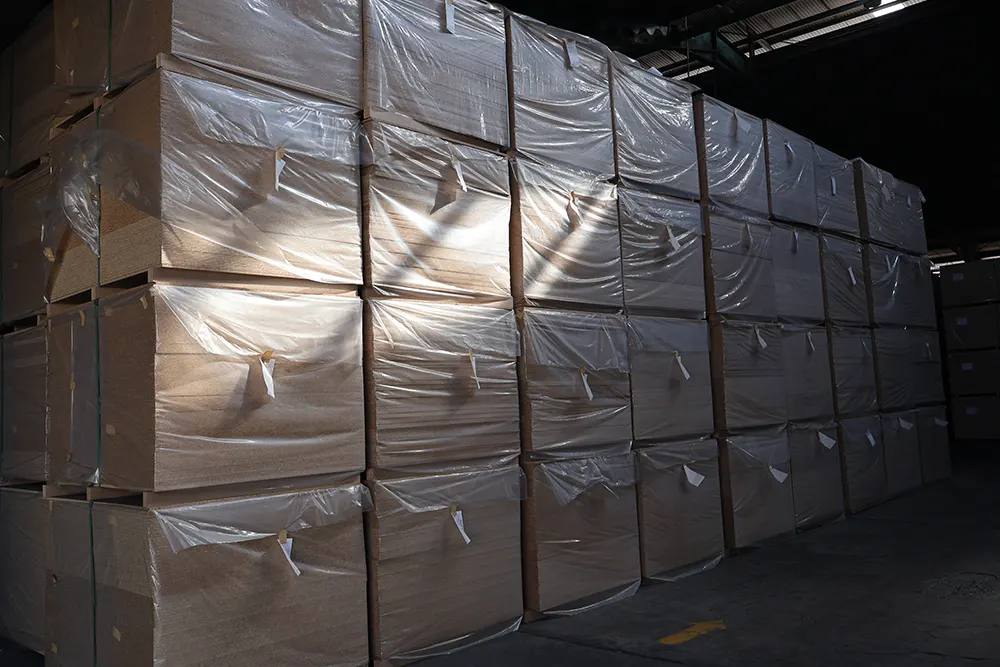纸板与纸板: 了解要点
在包装和材料的世界里,选择正确的材料会对耐用性、成本和美观产生重大影响。刨花板和纸板是两种常见的比较材料。虽然它们看似相似,但它们的特性和应用却大相径庭,因此了解它们的独特特性至关重要。
在本指南中,我们将分析刨花板和硬纸板之间的区别,强调它们的优点、缺点以及每种材料的最佳用途。
目录
什么是刨花板?
Chipboard is a dense material made from compressed wood fibers. It is commonly used for premium packaging, furniture backing, and creative projects that require a smooth surface and strong structure.
刨花板的优点
- 耐用性: 刨花板比硬纸板坚固,适用于需要牢固支撑底座的产品。
- Premium Appearance: 此外,其光滑平整的表面非常适合印刷、覆膜或添加涂层,可提供精致光亮的外观。
- 环保: 此外,其光滑平整的表面非常适合印刷、覆膜或添加涂层,可提供精致光亮的外观。
刨花板的缺点
- 重量级: 另一方面,刨花板比硬纸板重,会增加运输成本。
- 易受水渍影响: 如果没有适当的层压或涂层,刨花板会吸湿并随着时间的推移而降解,使其不太适合潮湿的环境。
什么是纸板?
相比之下,纸板是一种轻质材料,由多层牛皮纸或纸板压缩而成。它广泛用于装运箱、包装和日常用品。
纸板的优点
- 轻便灵活: 纸板具有柔韧性,易于处理、切割和折叠,因此用途广泛。
- 经济高效: 此外,纸板通常比刨花板更经济实惠,因此非常适合大规模生产和预算有限的项目。
- 可回收: 事实上,纸板是可生物降解的,而且经常被回收利用,最大限度地减少了对环境的影响。
纸板的缺点
- 耐用性有限: 不过,它不如刨花板坚固,可能无法承受重物或粗暴的搬运。
- 不那么美观: Additionally, the plain, unfinished look may not be suitable for high-end products or projects.
刨花板与纸板 并排比较
| 特点 | 刨花板 | 纸板 |
|---|---|---|
| 实力 | Strong and rigid | Weaker, suitable for lighter loads |
| 重量 | 更重 | 重量轻 |
| 防水性 | 需要覆膜保护 | 容易吸湿 |
| 外观 | 光滑、专业的表面处理 | 基本实用的外观 |
| 费用 | 更高 | 经济实惠 |
| 环保 | 通常由回收材料制成 | 完全可回收 |
刨花板与纸板的应用
- 包装解决方案
- 刨花板: 刨花板常用于奢侈品和零售包装。例如,它可用于香水盒、电子产品盒和礼品包装。刨花板坚固耐用,表面处理精美,非常适合用于既需要保护又需要精美外观的物品。
- 纸板: 相比之下,纸板是装运箱、谷物盒和轻质包装的首选材料。纸板的成本效益高,是大批量生产物品的首选。
- Crafts and Creative Projects
- 刨花板: Due to its strong and smooth surface, chipboard is a favorite for scrapbooking, DIY projects, and creative displays. It’s also commonly used for making custom signs and decorative frames.
- 纸板: On the other hand, cardboard is versatile for simple crafts and children’s art projects. It is easier to cut and fold, making it a flexible material for creative uses.
- Industrial and Furniture Uses
- 刨花板: Widely used in the furniture industry, chipboard serves as a backing material for cabinets, shelves, and other home furnishings. Its durability ensures longevity in structural applications.
- 纸板: While less common in heavy-duty industries, cardboard is used for temporary furniture or displays, especially for exhibitions and pop-up events.
选择硬纸板与纸板时的主要考虑因素
When deciding between chipboard and cardboard, consider the following factors:
- Purpose:
Use chipboard for products requiring durability, elegance, or premium packaging. Conversely, choose cardboard for everyday packaging and cost-effective solutions. - Budget:
Chipboard is typically more expensive, so it’s better suited for specialized or high-value projects. In contrast, cardboard is ideal for large-scale or economical requirements. - Environmental Impact:
Both materials can be environmentally friendly, but ensure you choose recycled or recyclable options to minimize waste. - 防潮性:
Opt for laminated or coated chipboard for products exposed to humidity. However, avoid cardboard in wet environments unless it’s treated for water resistance.
为什么要了解刨花板与纸板的区别
The choice between chipboard and cardboard can impact not only the appearance of your packaging or project but also its functionality and sustainability. In general, businesses prefer chipboard for high-end packaging, while cardboard remains the standard for shipping and lightweight applications.
更多信息: 刨花板可以涂漆吗?综合指南
刨花板和纸板的创新用途
- Chipboard Innovations
- Retail Displays: Custom displays made from chipboard add a professional touch to store presentations.
- Rigid Boxes: Used for electronic gadgets, luxury items, and gift sets, rigid boxes ensure protection and style.
- Creative Branding: Chipboard’s smooth surface allows for vibrant and detailed printing, enhancing brand visibility.
- Cardboard Innovations
- E-Commerce Packaging: Lightweight yet protective, cardboard boxes are a staple for online retailers.
- Sustainable Solutions: Moreover, companies are innovating with biodegradable and compostable cardboard for eco-conscious consumers.
- Pop-Up Architecture: Lastly, cardboard is used to create temporary structures, from art installations to small shelters.
结论: 纸板与硬纸板--哪一种更适合您?
Understanding the differences between chipboard and cardboard helps you make informed decisions based on your needs.
- Choose chipboard if strength, durability, and premium aesthetics are priorities.
- Opt for cardboard if you need lightweight, cost-effective, and recyclable solutions.
Both materials offer unique benefits, and selecting the right one ensures your packaging or project aligns with your goals and values.



